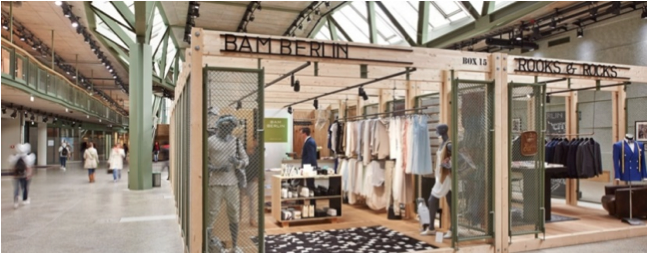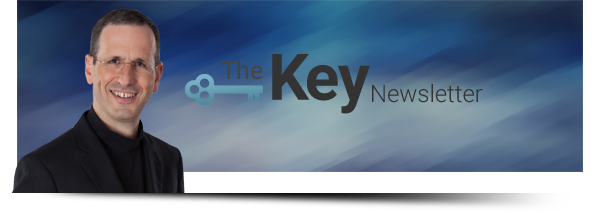Hello Leader,
Here is a question for you: Twenty years into the coaching revolution, why do we see so many sub-optimal teams that produce collective stupidity instead of collective wisdom and breakthroughs?
Are You Creating Collective Stupidity or Collective Breakthroughs?
Here is the point to reflect on:
As I discussed in the Future of Coaching, the coaching revolution became a phenomenon in the mid- to late '90s. Companies suddenly realized the value of coaching high performers rather than poor performers. The premise was that in order to grow, you must build on strengths rather than try to fix weaknesses. As the focus shifted from providing remedial help to enhancing high performance, coaching was welcomed into the mainstream. In the early 2000s, coaching schools and modalities appeared like wild flowers, and corporations established coaching as an in-house resource. Concurrently, efforts were made to redefine organizational development and effectiveness and to build learning organizations.
With all this help, heightened awareness and knowledge, the nagging question is why are there so many teams that operate at a sub-optimal level, producing dysfunctional and absurd results?
One key reason for the prevalence of collective stupidity is that learning is not applied, a failure that causes people to make the same mistakes time and time again. Corporate board rooms and strategy efforts look like the movie "Groundhog Day," in which Bill Murray plays a character who is locked in a time loop that repeats February 2nd. At first he takes advantage of situation without fear of consequences; however, he reaches the point at which he is desperate to break out of the time loop, only to find that nothing works. It is only when he learns the lesson of inspired self-improvement and personal transformation that he is able to liberate himself and the town from the never-ending replay of Groundhog Day. In many organizations we are terribly short of this kind of breakthrough realization and learning.
To avoid the fatal flaw of collective stupidity, teams must dramatically accelerate the learning cycle and their application velocity. I've found that the ability to build a just-in-time learning "muscle" helps executive teams create in-the-moment learning applications that result in collective breakthroughs. In fact, this capability may be the most critical differentiator I've observed with winning teams.
To show you how you can achieve breakthroughs with your team, I am going to provide a sample of the high velocity learning application process so that you can immediately make it part of your toolkit. In my experience, high velocity learning works especially well when executives embrace a higher consciousness and engage a meta-level awareness that monitors three levels of process concurrently:
- What do I do...
- How do I do it...
- Why do I do it...
In my key Your Three-Story House, we describe three levels of work: on the ground floor you work in the business, on the second floor you work on the business, and on the third floor you work on you. Higher level awareness and consciousness implies that you develop the capacity to be present concurrently on all three floors.
Why is this higher level of executive awareness and consciousness so critical?
As the speed and connectivity of the global media and business environment continue to intensify exponentially, your capacity to think clearly and to solve problems is challenged. To make decisions and lead effectively, you must build your own intensity, learning velocity and executive awareness.
The high velocity learning application process: The QIA in-the-moment learning
To help executive teams build the muscle memory of high velocity in-the-moment learning, I teach them the three-step QIA process:
- ➢ Q: Frame a provocative learning question
- ➢ I: Develop an insight
- ➢ A: Take action QIA = Question ➡ Insight ➡ Action (application)
Here is an example of one just-in-time learning from a recent strategy session I led with a global leadership team.
About three hours into the workshop I stopped the proceeding for a quick QIA process check.
First, I framed a question designed to promote learning by observation: "What have you observed in our meeting so far today?"
"We are experiencing great collaboration, participation and focus, and we are able to create concrete progress on our priorities," was the response from some team members.
Second, I searched for actionable insight: "What enables you to produce this collaborative participation today and create focus and progress? What is the learnable insight?"
This question moved people into reflection mode as it shifted the conversation from the foreground of what we do to the background of how we do it. A moment later, one executive added, "We've brought to the table a high level of transparency today. We are showing up with the courage to speak the truth. When we operate at that level and are not defensive, we dramatically accelerate collaboration. Actually there are moments that feel like we are joining and operating as one big mind, something that's bigger than our individualized thought process. It's a highly energizing experience."
As people nodded with agreement, I used the insight to forward the conversation to action by asking: "How will you apply this insight in the next 72 hours? Putting defensiveness aside, stepping forward to engage in transparent and courageous conversation is a choice and a practice. These are behavioral and mental muscles we must exercise or they will quickly get dull and atrophy. What will you do to build on this momentum?"
Here are a few of the action application commitments people made on the spot:
- I am going to practice this awareness in meetings this week.
- In my workshop tomorrow I will observe those who lead by creating courageous conversations and point out the behavior that enables accelerated collaboration.
- I have two opportunities in the next 48 hours to practice transparent communication.
- I am going back home tonight to share this insight with my family and practice accelerating mutual understanding and collaboration by listening deeply.
This is the Question-Insight-Action (QIA) three-step learning process. It can take as little as three minutes or it can be extended to a longer conversation. The point is that throughout the day, you repeatedly engage your team with in-the-moment high velocity learning conversations that create application and move learning insights into behavioral practice and commitment.
To break out of collective stupidity and dysfunction and to produce collective wisdom that creates breakthroughs, we must build high velocity learning applications. Learning must be an integral part of work: unless it is applied immediately, it remains an isolated intellectual exercise that is not very effective.
Case study: The Bikini Concept Mall
The QIA is a pragmatic process that can be adapted to any situation. Here is another example. On a recent trip to Berlin, I walked into The Bikini Concept Mall next to the Tiergarten Zoo. Walking through the Bikini Mall, I noticed something I had not seen before. On the main floor there were a series of modular wooden stalls (boxes) that contained a variety of vendors. While the main structure of the mall contained recognized chains, the wooden stalls were used by short-term tenants, independent businesses, to gain access to the mall for a few months.

The QIA process kicked in. I stopped and asked myself: What am I seeing here?
The mall contained sophisticated branded stores in its permanent structure, and in the main hall it created an opportunity for entrepreneurs that couldn't rent an expensive permanent space to gain access to upscale mall shoppers. Although this format may be found in U.S. malls as well, the design of the Bikini Boxes is unique.
Next l asked myself: What is the insight? How can this concept be applied elsewhere?
The insight is that companies must build an easier entry for creativity and experimentation in their organizations. To do this, leaders must facilitate and encourage entrepreneurs to try out innovative ideas inside the organizational structure. Companies need to seek new forms and creative processes that make it easier for innovators to try out their experimental ideas along with those that are established and recognized.
Finally, I asked myself: What action can I take immediately to internalize and apply this insight in my own work?
I've shared the Bikini Concept Mall in a follow-up workshop and asked executives how they can enable an easier entry for innovation into their organizations. I continually create my own "experimental boxes" by incorporating new ideas and concepts in my work with clients to test ways of accelerating the results we are working to produce.
Here is the new muscle memory I ask you to practice: observe yourself in action. Ask yourself what you are seeing. Reflect on and capture the insight. Take action and apply high velocity learning within 72 hours. By catalyzing this behavior with your team, you can expect to create collective breakthroughs.
© Aviv Shahar

